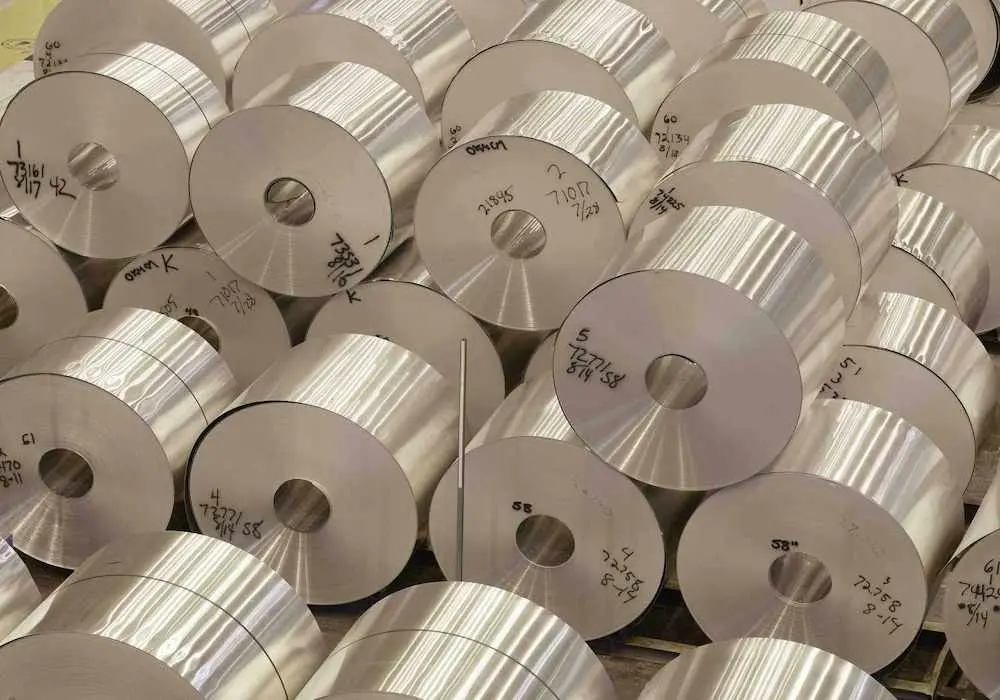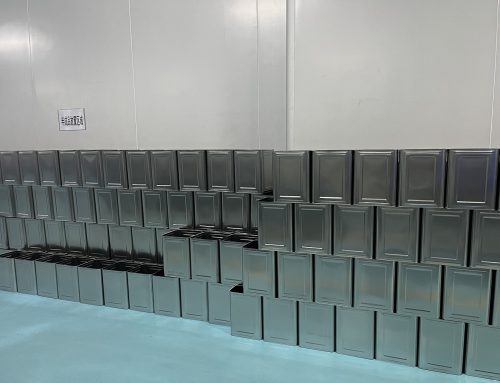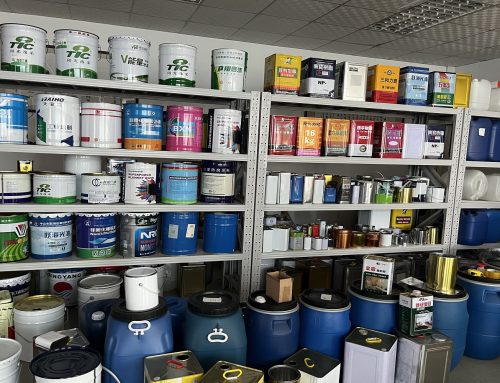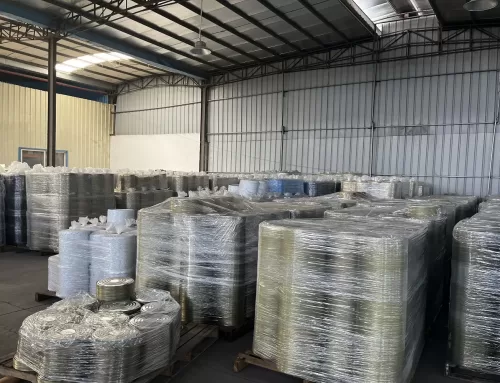(1) The major tinplate producing countries worldwide have mostly stopped building new tinplate (including TFS) units, but developing countries are still constructing new production lines, especially China, which is growing rapidly. TFS product production costs are low, which can save scarce tin resources, and have achieved significant development in the past 40 years, which has now stabilized, while China is still developing.
(2) Thinning of tinplate thickness is another trend in saving tin resources and developing beyond TFS. Secondary cold-rolled tinplate (including TFS plate) is becoming increasingly widely used. Three-piece can bodies now widely use 0.14~0.17mm thick tinplate, while DI material used in two-piece steel cans in Europe commonly uses 0.235mm thick (equivalent to 0.245mm thick for 355mL cans), and some have already used 0.205mm DI material (330mL), while 0.19mm (330mL) DI material is in the testing phase. Japan’s TULC material has been reduced to 0.18mm thickness (but the can body wall thickness is 0.08mm, thicker than traditional DI cans).

(3) Clean production to reduce environmental pollution.
In North America and Europe, research and development of chromium-free passivation is underway. Traditional PSA plating solution is gradually being replaced by MSA plating solution due to its high toxicity and heavy pollution.
The passivation film of tinplate is composed of metal chromium, hydrated chromium oxide, and tin oxide. The most commonly used cathodic dichromate passivation treatment for food and beverage cans is highly polluting, and countries are now developing passivation treatment technologies with less environmental pollution.
In the UK, a working group composed of tinplate manufacturers, coating manufacturers, can makers, and chemical companies is demonstrating passivation treatment technologies such as zirconium, titanium, cerium phosphates, silicates, and some organic coatings.
Clariant in the UK is a leading company in electrochemistry, and their basic chemical substance, phenolsulfonic acid (PSA), is used by US tinplate producers. The basic formula contains 2% free phenol and is considered the most environmentally friendly. The improved Clariant formula (LPSR) reduces free phenol to 1% and dihydroxydiphenyl sulfone (DDS) to 0.7%, which is not only environmentally friendly but also has the lowest cost.
In other European countries, the focus is on the demonstration of chemicals such as polyacrylic salts and rosin acid siloxanes.
In the US, it is believed that zirconium sulfate (ZOS) and fluorinated zirconate (F-Zr) can replace chromate.
In the Asia-Pacific region, mixed metal experiments with cerium oxide, silicon oxycarbides, and titanium salts are underway, with fluorinated zirconate being proven to be the most successful.
In the printing ink field, traditional solvent-based inks are being replaced by environmentally friendly inks such as UV-cured inks. In Europe, 60% to 70% of the printing ink lines use it, and in the UK, it has reached 90%. Coating paints are also being vigorously promoted for health and safety.
(4) Developed countries attach great importance to the recycling and reuse of metal cans. The EU and other countries have issued regulations that specify recycling targets and recycling rates. Germany requires a recycling rate of 70% for tinplate cans and 50% for aluminum cans. The UK’s 2008 recycling target was 61.5% for steel cans and 35.5% for aluminum cans. In 1998, the United States achieved a recycling rate of 56% for both steel and aluminum cans. In 2000, Japan achieved a recycling rate of over 80% for both steel and aluminum cans.
(5) Toyo Kohan Co., Ltd. of Japan has developed a co-extruded composite coating for tinplate cans. Toyo Kohan’s strategy is to work with its production partners in thin iron manufacturing and can making to improve its technology. In 1997, Toyo Kohan produced its first TULC can (Toyo Ultimate Can). Between 1998 and 2001, non-oriented rolling films for tinplate and double-sided co-extruded composite coatings for tinplate were successfully developed. In 2006, the introduction of dry forming technology reduced the cost of TULC cans, increased production efficiency, and further reduced their environmental impact. The non-oriented rolling film inside improved the stretching performance of the iron sheet, achieving the best molding effect for can making. This film only requires a low preheating temperature during production, which is effective for coating extrusion adhesion and reducing production costs.
Double-ended co-extrusion stretching (DEC) is an extreme stamping forming process that can form stable films of 10 pm or less on the can wall. However, the production cycle of cans has been shortened and the speed of production lines has been limited. It is expected that DEC will reach a certain speed by 2008.
Cans made of multipolymer-coated iron can withstand the impact and friction encountered by the can throughout the entire transportation chain. The recycling rate of lightweight and sturdy can packaging is continuously increasing. The recycling rate of iron packaging in the 15 EU countries has reached 63%, and iron packaging has achieved the relevant regulations of the EU in reducing raw material and energy consumption and environmental impact.
Protact, the multipolymer-coated iron sheet of Orus Packaging Plus Co., Ltd., combines the characteristics of multipolymer and iron sheet to provide safe, universal, and high-performance packaging materials. There are two production processes for Protact iron sheet: film coating technology with a production speed limit of about 50-80m/min, and extrusion technology with a production speed of 100m/min, which can reach a maximum of 300m/min. Protact iron sheet has different types of interchangeable composite layers, can be coated on one or both sides, can choose different thicknesses of multipolymer, can be transparent or colored, and customers can also request special requirements, such as tension during production, adhesion of multipolymer, printability, and lubrication.
ICI Coatings Global Research and Survey Department believes that the ideal coating system process formula is the key to achieving the best corrosion resistance and food safety for iron sheet, and the coating can adapt to the entire production chain of can making, ultimately ensuring the quality of empty cans.
(6) Compared with traditional three-piece cans and two-step drawn and wall ironing (DW) cans, the development of one-step drawn cans requires specialized polymer coatings to withstand strong stretching. As the forming capability increases, we must enhance the density of polymer cross-links to improve the corrosion resistance of the can’s inner wall.
Different steel substrates will affect the surface tension of the coating, the interaction between the coating and the steel substrate, and the adhesion and corrosion resistance of the coating. The influence of temperature is also important during bending, as temperature increase may cause the coating to shrink and lose adhesion. The more uniform the humidity on the coating surface, the less wetting agents are required for the coating, and the less solvent is needed for water-based coatings.
(7) Technistan is a new electrolytic process for producing tinplate, developed by the US company Tehic. This work is being conducted in the United States, and the process formula consists of four parts: a tin sulfate solution with a concentration of about 20g of tin metal per liter of concentrated solution, 5% sulfuric acid, 5% Techristan TP additive, and an antioxidant (to avoid excessive deposits on the surface of the iron due to the use of sulfuric acid). This is a new process that Tehic is seeking to reduce production costs in the face of rising cold-rolled sheet prices. However, to be accepted by the market, there will be a long period of time to validate the process’s impact on the environment.
More: Factors Affecting Welding Quality of Tinplate and Tips for Improvement




